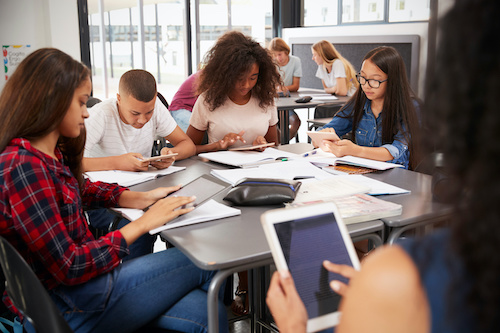After decades of working with educational technology, I’ve come to the realization that technology will have its greatest impact in the classroom when educators allow learners to use digital technology as a self-directed learning tool. This means not just providing students with laptops and online resources, but ensuring they have the necessary skills to find, validate, apply, and curate the vast amount of information now available to them.
More importantly, they must be given control of when and how these digital tools are used. Think about how adults use their smartphones; they use them whenever they need to. No one is dictating when they can use it, how they can use it, or where they can use it–why don’t we allow learners to do the same?
Imagine a classroom where students have unfettered access to digital tools and resources whenever needed. That would be a very different classroom than the ones I’ve experienced, but one that would be able to support the digital learners in our classrooms today.
This realization is based on years of implementing various educational technology initiatives, and the recognition of the similarity between the impact mechanical technology had on the Industrial Age and how digital technology has impacted the Information Age. When mechanized technology was introduced, it was primarily used to replace repetitive and rote physical tasks. It took a while for people to be comfortable with mechanized automation, but once they were, it created growth and advances in manufacturing that were previously unattainable.
Similarly, today’s digital tools can be used to replace repetitive and rote mental tasks. In other words, digital technology has automated memorization. In a typical classroom, students learn content through processes that rely heavily on a variety of rote and repetitive activities. These activities not only help students learn the content, but also allow them to develop memorization skills.
- Are substitutes the answer to the teacher shortage? - June 13, 2023
- Preparing for ransomware attacks begins with education - June 13, 2023
- How to use UDL-inspired technology to reengage students - June 12, 2023

